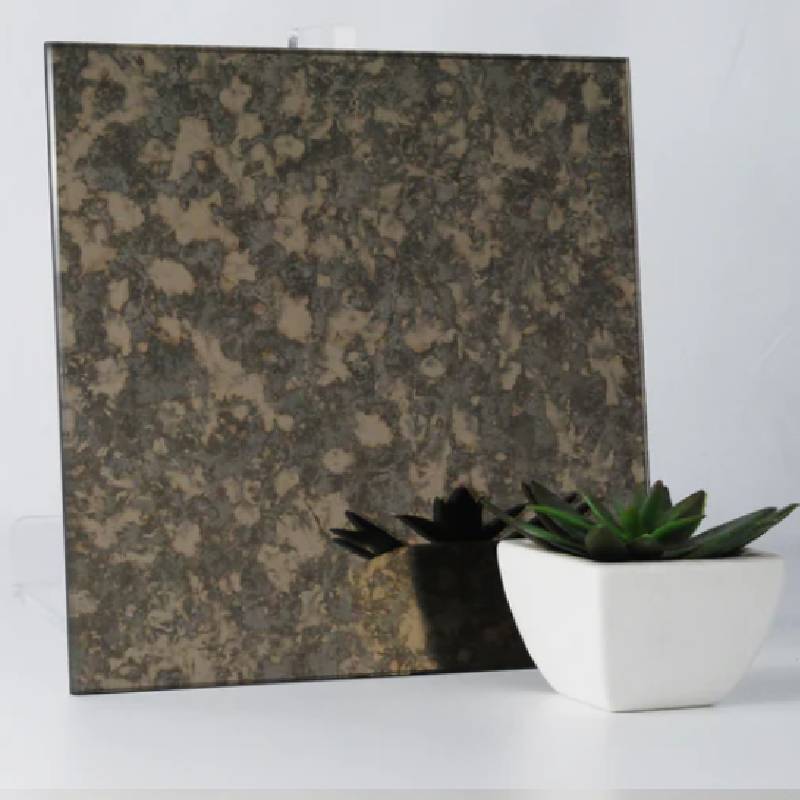The Process of Sheet Glass Manufacturing
Sheet glass manufacturing is a sophisticated process that has evolved significantly over the years. It involves transforming raw materials into flat glass sheets, which are then used in a myriad of applications, including windows, mirrors, and screens. Understanding the intricate steps of this process not only highlights the technological advancements but also underscores the importance of innovation in the glass industry.
Raw Materials
The primary ingredients for manufacturing sheet glass include silica sand, soda ash, and limestone. Silica sand is the main component, providing the essential silica required for glass formation. Soda ash serves as a flux, lowering the melting temperature of the raw materials, while limestone enhances the durability and chemical resistance of the resulting glass. Other additives, such as alumina, magnesium oxide, and coloring agents, can also be incorporated depending on the desired properties of the end product.
Melting Process
The manufacturing process begins with the careful measurement and preparation of ingredients. These raw materials are then mixed together and fed into a furnace where they are subjected to high temperatures, typically between 1,600 and 1,700 degrees Celsius (2,912 to 3,092 degrees Fahrenheit). The intense heat melts the mixture, transforming it into a molten glass.
The furnace used for this purpose can either be a traditional tank furnace or a more modern and efficient regenerative or electrical furnace. The choice of furnace impacts energy consumption, production capacity, and the overall sustainability of the manufacturing process.
Forming the Glass
sheet glass manufacturing
Once the glass has reached its molten state, it is moved to the forming area. This is where the flat glass sheets are produced. The most common method used is the float glass process. In this method, molten glass is poured onto a bath of molten tin. The glass spreads out and forms a flat surface as it floats on the tin. This technique allows for a uniform thickness and smooth finish, which are critical quality attributes in sheet glass.
After floating, the glass is gradually cooled in a controlled manner in a process known as annealing. This cooling is critical as it relieves internal stresses formed during the cooling process. The annealing lehr, an insulated conveyor system, ensures that the glass is cooled evenly to avoid any flaws that might compromise its strength or clarity.
Cutting and Finishing
Once the annealing process is complete, the continuous sheet of glass is cut into desired sizes and shapes. This stage may involve further processing steps such as polishing the edges, applying coatings for UV protection, or tempering to enhance strength and durability. Tempered glass is subjected to controlled heating and cooling cycles, making it more resistant to impacts and less prone to shattering.
Quality Control
Quality control is an essential aspect of sheet glass manufacturing. Throughout the process, various tests are conducted to ensure product standards are met. These tests can range from visual inspections for clarity and defects to laboratory assessments of thermal and mechanical properties. Adhering to strict quality standards is crucial, especially when the glass is intended for safety-critical applications such as automotive or architectural uses.
Conclusion
The manufacturing of sheet glass is a complex interplay of chemistry, engineering, and craftsmanship. Whether it's the clarity in windows or the shininess of mirrors, the quality and aesthetics of glass products significantly impact our daily lives. As concerns over sustainability and energy efficiency grow, the glass manufacturing industry continues to innovate, incorporating environmentally friendly practices and materials, aiming for a more sustainable future. With advancements in technology and techniques, the sheet glass manufacturing process is poised to evolve, enabling even greater applications and possibilities in the years to come.
 Afrikaans
Afrikaans  Albanian
Albanian  Amharic
Amharic  Arabic
Arabic  Armenian
Armenian  Azerbaijani
Azerbaijani  Basque
Basque  Belarusian
Belarusian  Bengali
Bengali  Bosnian
Bosnian  Bulgarian
Bulgarian  Catalan
Catalan  Cebuano
Cebuano  Corsican
Corsican  Croatian
Croatian  Czech
Czech  Danish
Danish  Dutch
Dutch  English
English  Esperanto
Esperanto  Estonian
Estonian  Finnish
Finnish  French
French  Frisian
Frisian  Galician
Galician  Georgian
Georgian  German
German  Greek
Greek  Gujarati
Gujarati  Haitian Creole
Haitian Creole  hausa
hausa  hawaiian
hawaiian  Hebrew
Hebrew  Hindi
Hindi  Miao
Miao  Hungarian
Hungarian  Icelandic
Icelandic  igbo
igbo  Indonesian
Indonesian  irish
irish  Italian
Italian  Japanese
Japanese  Javanese
Javanese  Kannada
Kannada  kazakh
kazakh  Khmer
Khmer  Rwandese
Rwandese  Korean
Korean  Kurdish
Kurdish  Kyrgyz
Kyrgyz  Lao
Lao  Latin
Latin  Latvian
Latvian  Lithuanian
Lithuanian  Luxembourgish
Luxembourgish  Macedonian
Macedonian  Malgashi
Malgashi  Malay
Malay  Malayalam
Malayalam  Maltese
Maltese  Maori
Maori  Marathi
Marathi  Mongolian
Mongolian  Myanmar
Myanmar  Nepali
Nepali  Norwegian
Norwegian  Norwegian
Norwegian  Occitan
Occitan  Pashto
Pashto  Persian
Persian  Polish
Polish  Portuguese
Portuguese  Punjabi
Punjabi  Romanian
Romanian  Russian
Russian  Samoan
Samoan  Scottish Gaelic
Scottish Gaelic  Serbian
Serbian  Sesotho
Sesotho  Shona
Shona  Sindhi
Sindhi  Sinhala
Sinhala  Slovak
Slovak  Slovenian
Slovenian  Somali
Somali  Spanish
Spanish  Sundanese
Sundanese  Swahili
Swahili  Swedish
Swedish  Tagalog
Tagalog  Tajik
Tajik  Tamil
Tamil  Tatar
Tatar  Telugu
Telugu  Thai
Thai  Turkish
Turkish  Turkmen
Turkmen  Ukrainian
Ukrainian  Urdu
Urdu  Uighur
Uighur  Uzbek
Uzbek  Vietnamese
Vietnamese  Welsh
Welsh  Bantu
Bantu  Yiddish
Yiddish  Yoruba
Yoruba  Zulu
Zulu 

